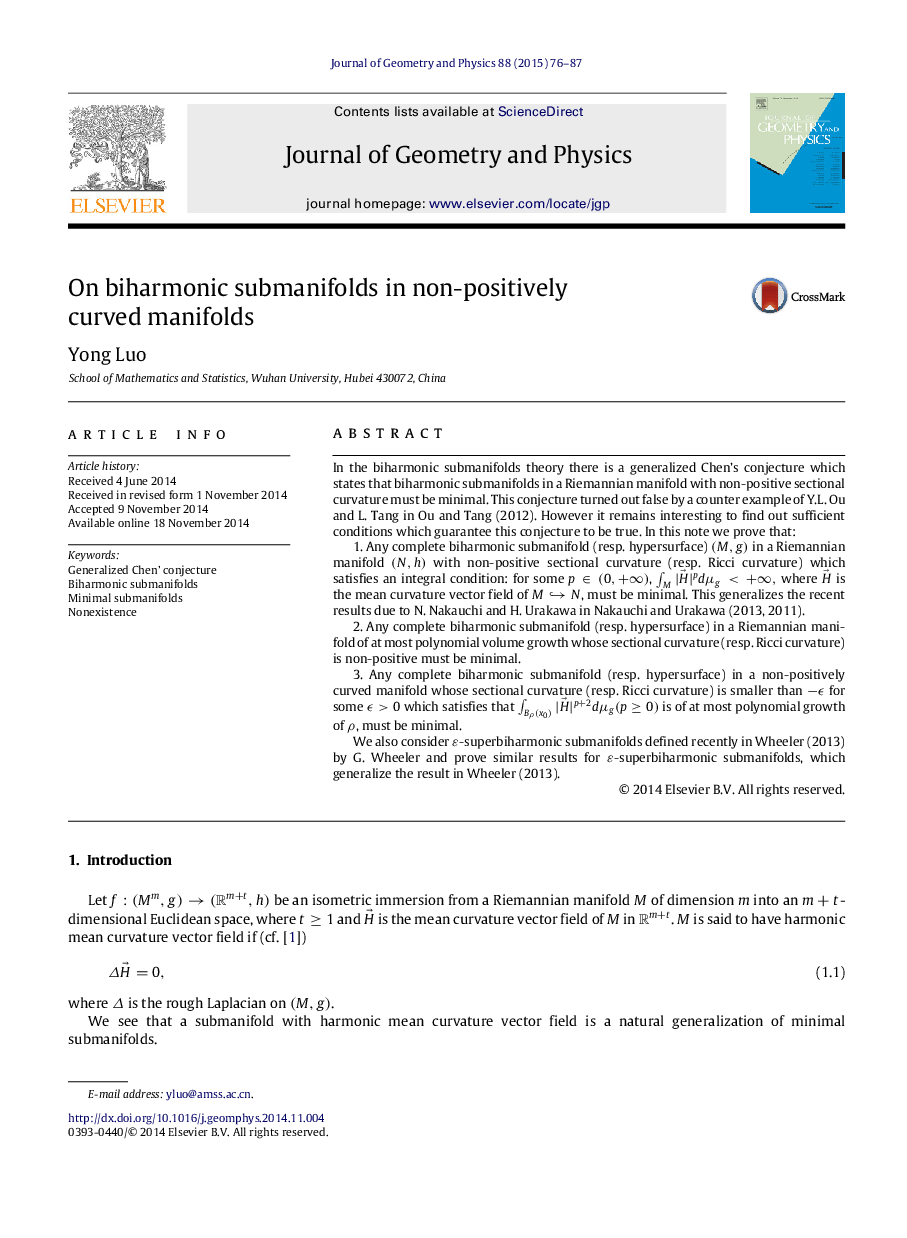| Article ID | Journal | Published Year | Pages | File Type |
|---|---|---|---|---|
| 1894749 | Journal of Geometry and Physics | 2015 | 12 Pages |
In the biharmonic submanifolds theory there is a generalized Chen’s conjecture which states that biharmonic submanifolds in a Riemannian manifold with non-positive sectional curvature must be minimal. This conjecture turned out false by a counter example of Y.L. Ou and L. Tang in Ou and Tang (2012). However it remains interesting to find out sufficient conditions which guarantee this conjecture to be true. In this note we prove that:1. Any complete biharmonic submanifold (resp. hypersurface) (M,g)(M,g) in a Riemannian manifold (N,h)(N,h) with non-positive sectional curvature (resp. Ricci curvature) which satisfies an integral condition: for some p∈(0,+∞)p∈(0,+∞), ∫M|H→|pdμg<+∞, where H→ is the mean curvature vector field of M↪NM↪N, must be minimal. This generalizes the recent results due to N. Nakauchi and H. Urakawa in Nakauchi and Urakawa (2013, 2011).2. Any complete biharmonic submanifold (resp. hypersurface) in a Riemannian manifold of at most polynomial volume growth whose sectional curvature (resp. Ricci curvature) is non-positive must be minimal.3. Any complete biharmonic submanifold (resp. hypersurface) in a non-positively curved manifold whose sectional curvature (resp. Ricci curvature) is smaller than −ϵ−ϵ for some ϵ>0ϵ>0 which satisfies that ∫Bρ(x0)|H→|p+2dμg(p≥0) is of at most polynomial growth of ρρ, must be minimal.We also consider εε-superbiharmonic submanifolds defined recently in Wheeler (2013) by G. Wheeler and prove similar results for εε-superbiharmonic submanifolds, which generalize the result in Wheeler (2013).
